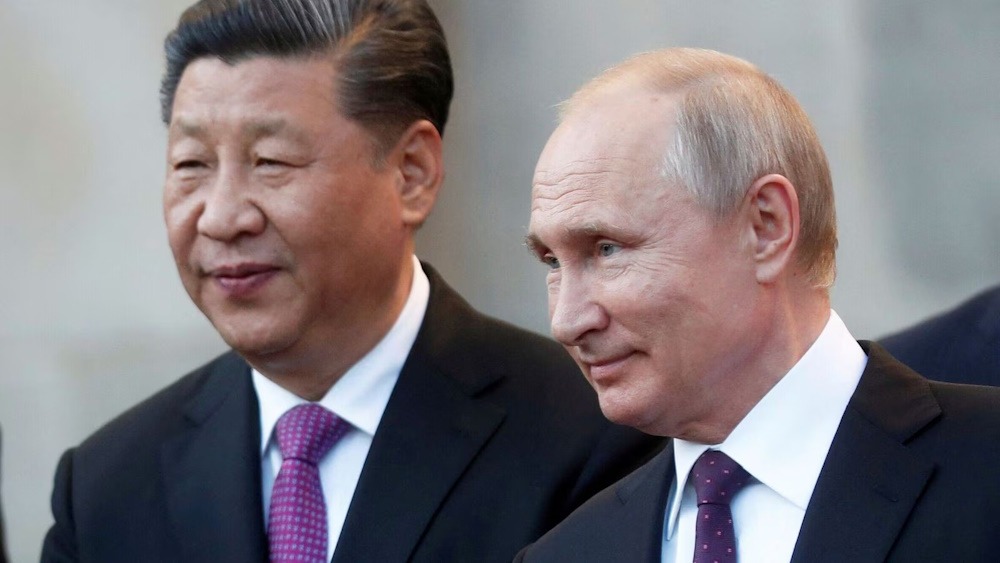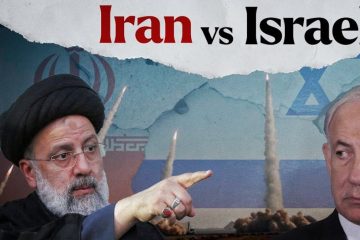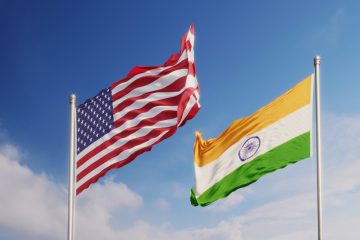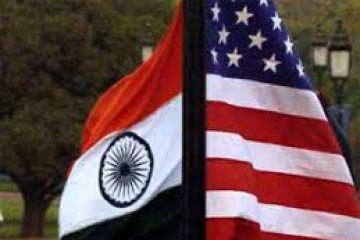Russia, China go from ‘no limits’ friendship to frenemies

During Vladimir Putin’s visit to this dry city as part of his recent extensive diplomatic tour in Asia, the local authorities adorned the boulevards with posters featuring the visage of the Russian leader. This was a predictable homage in a former Soviet republic where Moscow continues to have significant influence.
However, behind the posters, there is evidence of a significant change that has negative repercussions for Moscow’s global influence: an increasing number of automobiles with Chinese brand names like BYD and Geely are rapidly moving around the streets of Uzbekistan, while the presence of Russian Ladas is decreasing.
The relationship between China and Russia is currently at a peak, as both authoritarian countries unite to address what they perceive as a Western effort to restrict their influence. However, in Central Asia, a region that Moscow considers its own sphere of influence, the close relationship between Putin and Chinese leader Xi Jinping, which they described as having “no limits,” is now conflicting with Beijing’s worldwide aspirations.
The presence of tension is palpable as both Xi and Putin are currently in Kazakhstan for a summit of the Shanghai Cooperation Organization, a regional alliance focused on political and security matters. Xi is slated to proceed to Tajikistan as part of his eighth visit to Central Asia since assuming the presidency of China in 2013.
China has exploited the Ukraine invasion to erode traditional Russian spheres of influence. In Central Asia, similar to the Arctic, Moscow’s need on Beijing to support its military capabilities compels it to accept the encroachments.
Beijing is strategically integrating local economies in the region. Chinese investments are causing a shift in the region’s young workforce away from Russia. A railway project financed by China aims to establish a direct connection between China and Europe, avoiding the need to transit through Russian territory. Chinese renewable energy initiatives are aiding in the reduction of its dependence on Russian natural gas.
Sanjarbek Qulmatov, a 29-year old laborer employed at a Chinese factory in central Uzbekistan, expressed that the influx of Chinese funds has significantly improved employment opportunities for him and his fellow citizens.
According to the United Nations International Organization for Migration, the number of Uzbek workers in Russia decreased from 1.45 million in the previous year to approximately 1.3 million in 2023. The decline can be attributed to various factors, but Qulmatov specifically identifies the emergence of Chinese-funded competitors as a contributing factor.
“Those who are jobless can secure employment here rather than having to travel to Russia,” he stated.
In the context of Tsarist Russia, Central Asia held a similar significance as the American West did for pioneers: it was perceived as a frontier region that offered opportunities for expansion, modernization, and resource extraction. The Soviets diligently preserved the borders of their empire to prevent any expansion from China, while simultaneously exploiting and modernizing the region.
The power transition in the region has been underway for several years, but gained momentum following Russia’s invasion of Ukraine. This invasion was perceived by many in the region as a reckless and threatening breach of the territorial sovereignty of a fellow former Soviet republic. Instead of aligning themselves with Moscow, the five Central Asian governments chose to maintain a neutral stance regarding the invasion.
China serves as a model for the future development of Central Asia. According to Temur Umarov, a fellow at the Carnegie Russia Eurasia Center, Russia is a myopic political system that fails to support Central Asia’s strategic objectives.
Central Asia is becoming an increasingly significant route for China and Russia, both of which are land-based nations. It provides Putin with increased and immediate entry to markets in South Asia. It plays a crucial role in Xi’s Belt and Road Initiative, a large-scale infrastructure project designed to link China with the rest of the Eurasian continent via different land and marine routes.
In recent times, the United States has also intensified its endeavors to restore its authority in Central Asia. It has sent a series of high-ranking officials to the region, mostly with the aim of combating any resurgence of terrorism originating from Afghanistan.
Historically, Russia and China have maintained an implicit agreement regarding their roles in the region: Russia has the primary responsibility for ensuring security, while China concentrates on promoting development and making investments.
Currently, Beijing is shifting the equilibrium by exerting more influence through its significant economic power to enhance its political leverage. Last year, the trade volume between China and Central Asia increased to $98 billion, which is more than three times the amount in 2016.
According to government figures, China surpassed Russia as the leading trade partner in Uzbekistan in 2023. Uzbekistan is the most populous and industrialized country among the five post-Soviet Central Asian republics. The nation has been endeavoring to assimilate into the global economy following a period of twenty years characterized by isolationism.
Qulmatov is employed at the Peng Sheng Industrial Park, which was established in 2009 near the central Uzbek city of Sirdaryo with financial support from China. Due to a recent increase in investment, the area presently accommodates over twelve Chinese firms.
Qulmatov expressed his preference for taking his son to a park, which was funded by the Chinese, located adjacent to the industrial zone. He also expressed his desire to enroll his child in a new kindergarten in that area, which offers instruction in both Chinese and English.
“I would appreciate the presence of additional Chinese companies in this location,” he expressed.
BYD, a Chinese electric-vehicle manufacturer, commenced production on Thursday at a newly established facility in Jizzax, the birthplace of Uzbek President Shavkat Mirziyoyev. The company’s objective is to manufacture 50,000 vehicles annually. Key components, including batteries, will be imported from China, while local labor will be responsible for tasks such as welding, painting, and car assembly.
According to official figures, in 2023, China accounted for almost 80% of the total number of automobiles imported by Uzbekistan, which amounted to over 73,000. In 2021, Russia shipped approximately 4,500 automobiles to Uzbekistan. However, due to a significant decrease in demand, the cars from Russia are now grouped along with cars from other countries.
A recently constructed 12-mile tunnel, funded by China, has established the first direct rail link between the Fergana Valley, located in the easternmost part of Uzbekistan, and the rest of the nation. A roadway constructed by Chinese engineers that connects the northern and southern regions of Tajikistan has reduced the duration of journey by eight hours.
Historically, the majority of the railway networks and roadways constructed by the Soviets in Central Asia were primarily connected to Moscow. Central Asia’s profound isolation stemmed from a dearth of internal and global linkages.
Significant alterations may be imminent. In early June, the leaders of China, Kyrgyzstan, and Uzbekistan inked a significant agreement for the establishment of a railway line aimed at linking their nations. This project, which had been under consideration since 1997, is of great importance. The project aims to reduce the distance between East Asia and the Middle East and southern Europe by several hundred miles by bypassing Russia.
According to Mirshohid Aslanov, founder of the Tashkent-based think tank Center for Progressive Reforms and former Uzbek diplomat, Russian has exerted its influence over Kyrgyzstan, a member of the Russian-led Eurasian Economic Union, to impede the advancement of the route’s development for several years. However, the imposition of sanctions pertaining to the conflict in Ukraine has altered the circumstances surrounding economic operations involving Russia.
China is currently posing a challenge to Russia in the energy industry, which has historically been dominated by Moscow. Uzbekistan entered into an agreement to purchase Russian gas in 2023 following a series of power outages. However, the contract has been limited to a duration of two years thus far, which observers believe is a precautionary measure against Russia potentially using gas as a means of exerting political influence.
Simultaneously, trucks and trains transporting solar modules and wind turbines manufactured by Chinese renewable energy leaders LONGi and Goldwind are frequently observed traversing the nation. This is a crucial component of Tashkent’s endeavor to achieve a minimum of 40% of electricity generation from renewable energy sources by 2030.
Aslanov stated that while we maintain friendly relations with Russia, we are also actively seeking possibilities. “We are eagerly looking towards the east.”
China cannot completely supplant the role of Russia. The professional paths and social connections of the prominent individuals in the area are closely interconnected with Moscow, and the Russian language continues to serve as the common language of communication. According to a 2022 study conducted by the NGO Central Asia Barometer, people in the region generally hold a more positive perception of Russia than to China.
China’s treatment of Turkic Muslim Uyghurs, who share a similar culture and language with many in Central Asia, has damaged its reputation. Additionally, anti-Chinese sentiment has been fueled by certain Russian-language media outlets.
However, there are already indications that China is gaining influence among a new cohort of Central Asian leaders.
Nodirxon Mahmudov, a 19-year-old business student who completed his education at a prestigious high school in Uzbekistan, reported that out of his 26 classmates, three chose to further their studies in China, while none opted for Russia. According to him, in previous times, a large number of individuals would have sought admission to Russian colleges.
Mahmudov, who expresses a strong desire for a BYD, also holds the position of marketing manager at Hong Kong Academy, a privately-owned language-tutoring organization. During a July afternoon, a group of eight pupils, ranging in age from 11 to 21, were intently studying Chinese characters in a beginners’ class.
According to Mahmudov, government officials and business people were also visiting the institution to get Chinese tutors for the purpose of enhancing their professional growth. “They all perceive China as the future,” he stated.










